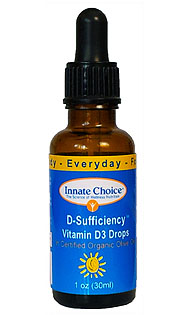THIS should probably be as high a priority as hand washing

Seriously
Great morning to you, New Day! Ready for spring yet, Chicago? 🥶
As April rolls on, we applaud those in our community who have been able to see the silver lining/wisdom of the universe/whatever you want to call it to experience these current times as a necessary reset and reevaluation time for humanity.
May your time in solitude, time without some of the same distractions we are used to, time with “nowhere to run to” (where everywhere we go, there we are), be time well-spent. And when it’s not, may we be gentle and non-judgemental of ourselves and others 🙂
Being willing to experience the “silver lining” (or whatever you want to call it) does not necessarily mean unquestioning silence, complacency, and acceptance when life may be calling for us to step up and speak out.
What does “taking this crisis seriously” mean to you? More and more distancing? For longer and longer amounts of time? Washing and disinfecting and washing and disinfecting. . .
What if it could also mean continuing to learn how important it is to treat our bodies and mother nature with love and reverence?
What if it could also mean continuing to learn ways to have our bodies NOT simply be passive virus food? If you are a YES to this, please scroll down and read on concerning the importance of Vitamin D.
As an office, a profession, and a paradigm for health, we continue to believe that humans are social beings, require interaction, and need touch, and that the covid crisis– specifically the the reaction to covid– is potentially undermining the long term health and sustainability of people, their families, and their communities.
We continue hope and pray that one of the results of all of this will be a revaluing of wellness based health care and a widespread acknowledgement that human touch is healthy, not harmful <3

Below is a review of literature on the Essential Role of Vitamin D in Viral Immune Defense. Review compiled by Dr. James Chestnut DC.
This is A LOT, but is meant for those of you who might be left thinking that the only “science” that can be trusted are the loudest voices that are calling for the most stringent, outside-in solutions as the only “serious” response.
Prietl, B. et al. (2013) Vitamin D and Immune Function. Nutrients, 5, 2502-2521; doi: 10.3390/nu5072502
“Vitamin D metabolizing enzymes and vitamin D receptors are present in many cell types including various immune cells such as antigen-presenting-cells, T cells, B cells and monocytes. In vitro data show that, in addition to modulating innate immune cells, vitamin D also promotes a more tolerogenic immunological status.”
“Vitamin D deficiency is also associated with the development of cardiovascular diseases, various types of cancer and autoimmune disorders, such as type 1 diabetes mellitus (T1D), multiple sclerosis (MS) and inflammatory bowel disease.”
“Over the last decade, the perspective on how vitamin D influences human health has changed dramatically based on the finding that the vitamin D receptor (VDR) and the vitamin D activating enzyme 1-α-hydroxylase (CYP27B1) are expressed in many cell types which are not involved in bone and mineral metabolism, such as intestine, pancreas, prostate and cells of the immune system.”
Vitamin D and the Innate Immune System
“Especially in immune cells, such as macrophages and dendritic cells, a lack of feedback mechanisms compared to kidney cells allows the production of high local concentrations of calcitriol needed for immunomodulation.”
“Early evidence that vitamin D acts as important stimulant for innate immunity came from reports about tuberculosis treatment with cod liver oil. More current studies specify how calcitriol enhances the antimicrobial effects of macrophages and monocytes, which are important effector cells, fighting against pathogens.”
“Human cathelicidin which causes destabilization of microbial membranes, is up-regulated in response to infections in humans and acts against bacteria, viruses and fungi.”
“Besides enhancing chemotaxis and phagocytic capabilities of innate immune cells, the complex of calcitriol, VDR, and retinoid X receptor directly activates the transcription of antimicrobial peptides such as defensin β2 (DEFB) and cathelicidin antimicrobial peptide (hCAP18).”
“This finding supports the theory that the vitamin D status regulates antimicrobial protein levels and may be crucial in infection control.”
Defensin and cathelicidin are anti-microbial proteins (AMPs) which are used by the cells of the innate immune system to kill invading viruses. This is a DIRECT effect of Vitamin D on the functional status and potency of the innate immune defense against viruses!
*Note also the mention of the VDR (vitamin D receptor) and the retinoid X receptor (Vitamin A receptor) which shows the synergistic effects of Vitamins A and D.
Vitamin D and the Adaptive Immune System
“Low serum 25(OH)D levels have been associated with upper respiratory tract infections (URTI), including influenza, chronic obstructive pulmonary disease and allergic asthma”. “In a Swedish RCT in 140 immunodeficient patients, daily intake of 4000 IU cholecalciferol over one year significantly reduced infectious symptoms, the total number of specific pathogens in the nasal fluid and the use of antibiotics in the vitamin D compared to the placebo group.”
“Besides fighting directly against microbes, monocytes and other innate antigen presenting cells (APC), in particular dendritic cells (DC), are important targets for the immune modulatory effects of vitamin D. APC are responsible for the initiation of the adaptive immune response as they present antigens to T cells and B cells and are able to modulate them by either immunogenic or tolerogenic signals such as cytokines and expression of co-stimulatory molecules.”
“Early studies investigating the effects of vitamin D on human adaptive immune cells demonstrated an expression of the nuclear VDR as well as vitamin D-activating enzymes in both T- and B cells [73]. Notably, VDR expression by these cells is very low in resting conditions but upon activation and proliferation, T- and B cells up-regulate VDR expression significantly, allowing regulation of up to 500 vitamin D responsive genes which influence differentiation and proliferation of these cells.”
“The other major type of adaptive immune cells, T cells, is also thought to be an important target for the immunomodulatory effects of different forms of vitamin D.”
“In principle, vitamin D exposure leads to a shift from a proinflammatory to a more tolerogenic immune status, including very diverse effects on T cell subtypes: Calcitriol suppresses T helper (Th) cell proliferation, differentiation and modulates their cytokine production. In particular, treatment of T cells with calcitriol or analogs inhibits the secretion of proinflammatory Th1 (IL2, interferon-γ, tumor necrosis factor α), Th9 (IL9) and Th22 (IL22) cytokines, but promotes the production of more anti-inflammatory Th2 cytokines.”
“Tregs act to suppress proinflammatory responses by other immune cells and aim to prevent exaggerated or autoimmune responses. They are potently induced by different forms of vitamin D.”
“Taken together these results suggest that vitamin D may not only support the innate but also the adaptive immune system.”
Martineau et al. (2015) Vitamin D supplementation to prevent acute respiratory tract infections: systematic review and meta-analysis of individual patient data. BMJ 2017;356:i6583
“Meta-analysis of IPD from 10 933 participants in 25 randomised controlled trials showed an overall protective effect of vitamin D supplementation against acute respiratory tract infection (number needed to treat (NNT)=33).”
“Benefit was greater in those receiving daily or weekly vitamin D without additional bolus doses (NNT=20), and the protective effects against acute respiratory tract infection in this group were strongest in those with profound vitamin D deficiency at baseline (NNT=4).”
“These findings support the introduction of public health measures such as food fortification to improve vitamin D status, particularly in settings where profound vitamin D deficiency is common.”
Urashima, M. et al. (2010) Randomized trial of vitamin D supplementation to prevent seasonal influenza A in schoolchildren. Am J Clin Nutr 2010;91:1255–60.
“This study suggests that vitamin D3 supplementation during the winter may reduce the incidence of influenza A, especially in specific subgroups of schoolchildren [those low in Vit D].”
Aloia, J et al. Epidemic Influenza and Vitamin D. Epidemiology and Infection 2007, Vol 135 (7) pp. 1095-1098
In a 3 year trial taking 800 IU/day of Vitamin D reduced the incidence of colds and flu by 70%.
After two years they increased the Vit D to 2000 IU/day and the incidence of colds and flu was reduced by almost 100% (only 1 of 104 subjects developed cold or flu in the final year).
Camargo, C.A.; Ganmaa, D.; Frazier, A.L.; Kirchberg, F.F.; Stuart, J.J.; Kleinman, K.; Sumberzul, N.; Rich-Edwards, J.W. Randomized trial of vitamin D supplementation and risk of acute respiratory infection in Mongolia. Pediatrics 2012, 130, e561–e567.
“WHAT THIS STUDY ADDS: In a randomized controlled trial of 247 Mongolian children with vitamin D deficiency in winter, with double-blinding and 99% follow-up, vitamin D supplementation significantly halved the risk of acute respiratory infections.”
MAIN CLINICAL GEMS
Influenza (flu) viruses, coronaviruses, and rhinoviruses (cold viruses) change each year and thus the development of antibodies via the adaptive immune system is not how we protect ourselves against such viruses.
Our main immune defense against flu and cold viruses are the phagocytes of our innate immune system (macrophages, neutrophils, and dendritic cells) which quickly and directly attack viruses, kill infected cells, and present antigens for recognition by the T-helper and T-killer cells of the adaptive immune response.
The innate immune system is the first line of defense and it is also the initiator of the second, more specific line of defense by the T-cells of the adaptive immune system.
The phagocytes of the innate immune system REQUIRE sufficient omega-3 fatty acids, Vitamin D, and Vitamin A and, as importantly, the proper synergistic amounts of Vitamins A and D.

This is Dr. Katie. I have been using this D supplement daily since 2006. That’s how important I believe it is. If you would like us to set one aside for you to pick up at your next visit, click here.

